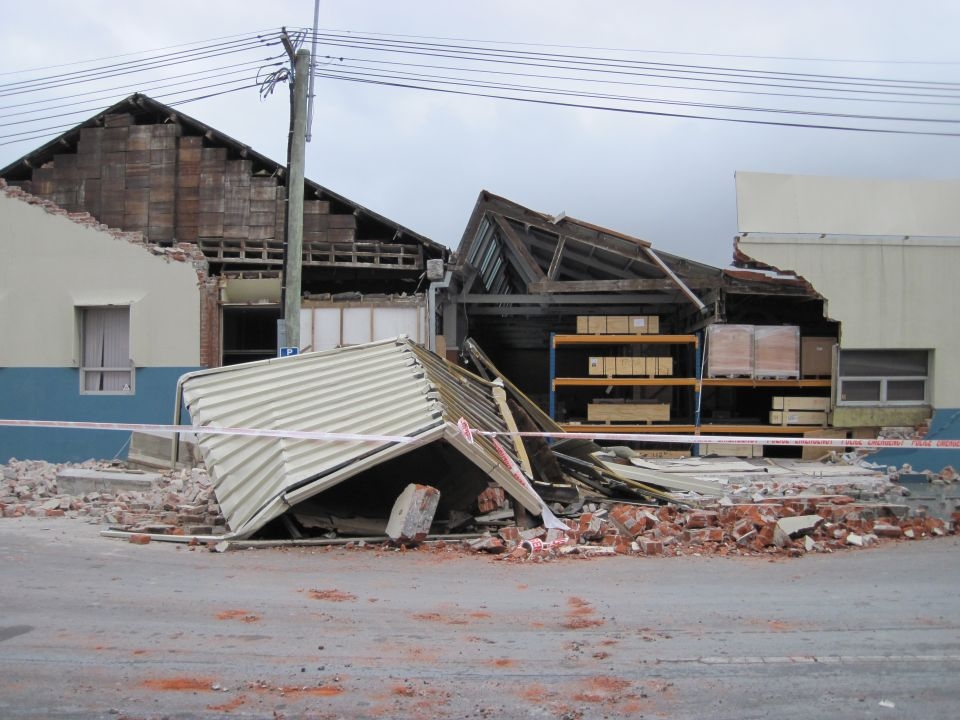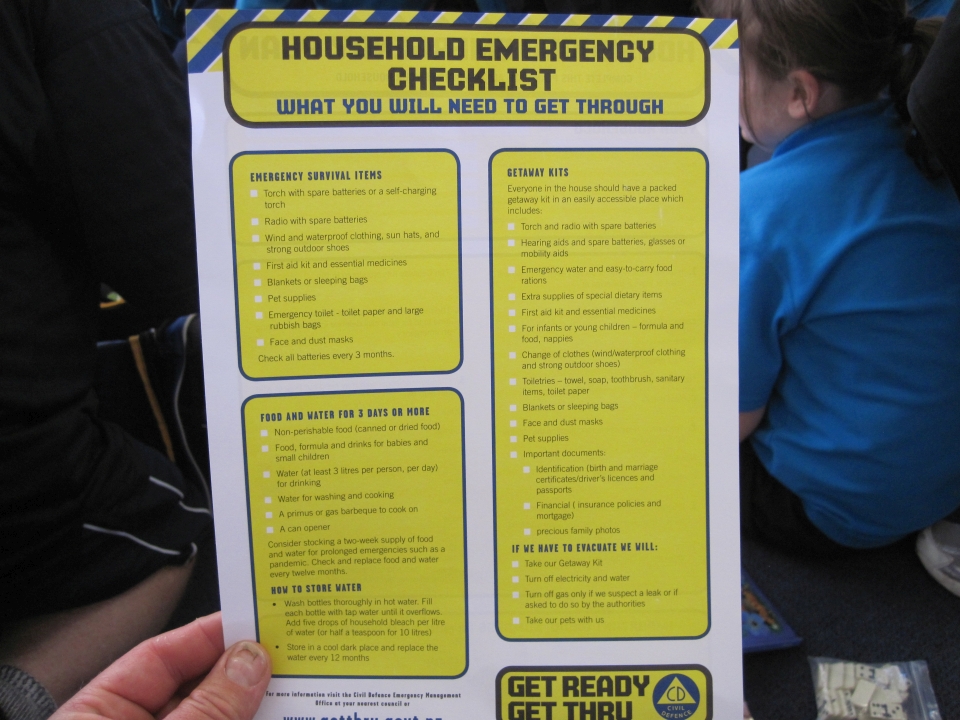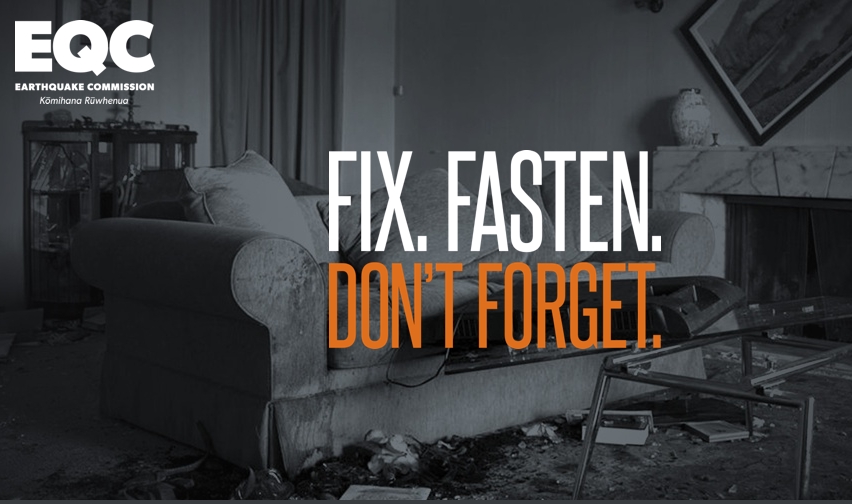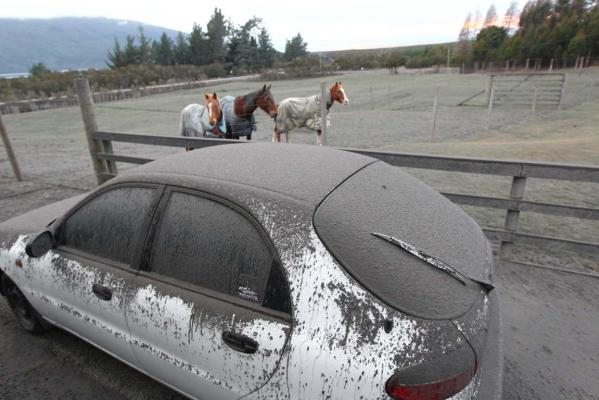It is important for all New Zealanders to know about geohazards and what to do if an event occurs. Find out about the area where you live and what the local hazards are. Develop an emergency plan with your family. Put a survival kit together and regularly update it. Be prepared for earthquakes and make sure your home is quake safe - check out the EQC website to find out more.
Volcanic eruptions can create many different hazards. The type of hazard depends on which volcano erupts and the type of eruption.
Ash Fall
When a volcano erupts a lot of different material explodes into the air above it. Large material will land close to the vent while ash can be carried long distances. The impact of ash fall on people and the environment depends on how thick the layer of ash is.
Lightning
Ash clouds can make powerful electrical fields causing lots of strong lightning strikes, which can harm radio communications and damage electrical lines, or start fires in buildings.
Flows and surges
If a large amount is erupted quickly from a volcano the eruption column can collapse. Like pointing a garden hose directly up in the sky. As the eruption column collapses it can change into a flood of hot, solid bits inside a liquid, gas cloud. Flows and surges often travel at speeds up to 200km/h, can be very hot and cause total destruction of the areas they cover.
Lava Flows
Lava flows are streams of molten rock that will travel down valleys on the slopes of volcanoes. The distance they travel depends on the thickness of the lava, amount and speed of the eruption, steepness of the slope, and shape of the land. Lava flows don't usually harm people because of their slow movement. However, lava flows will destroy buildings and other things in their path.
Lahars
Lahars are “mudflows”- mixtures of volcanic ash, blocks and water that are formed on volcanoes. The source of a lahar maybe a crater lake, a dam breaking or heavy rainfall washing ash from the slope of a volcano. Lahars will destroy buildings and plants in their path.
Volcanic gases
Volcanic gases are mainly made up of steam, carbon dioxide and smaller amounts of sulfur and chlorine. Dangerous amounts of gases are only found very close to the crater (within 1-2 km).
Landslides
Landslides can be wet, dry or both, If wet, a landslide may change into a lahar and carry on flowing further down the slope.
Tsunami
Tsunami are sea waves caused by earthquakes, by landslides and by underwater volcanic eruptions. A number of waves may be created, and they may travel a long distance. Island volcanoes can create landslides that flow into the sea causing tsunami.
What to do if there is a volcanic eruption
- Save water in your bath, basin, containers or cylinders at an early stage – supplies may become polluted.
- Stay indoors with your pets as much as possible.
- Wear mask and goggles if you go outside, to keep volcanic ash out of your eyes and lungs.
- Keep gutters and roof clear of ash – heavy deposits can collapse the roof.
- Take your outdoor clothing off before entering a building – volcanic ash is difficult to get rid of.
- Take your Getaway Kit with you if you have to leave.
- Turn electricity and gas off at the mains.
- Don’t go sightseeing.
- Don’t leave home unless advised to by Civil Defence.
- Try to get cars under cover to avoid damage from ash.
After an eruption
Keep buildings safe:
- Don't let ash build up. Volcanic ash is heavy and could cause damage to roofs and guttering.
- Light ash falls can also set in gutters and downpipes and cause problems.
- Use a broom to get the ash off.
- Try to stop ash getting into storm-water drains. Divert downpipes if necessary.
Take care of furniture and glass:
- Ash is very abrasive. If possible, clean with a vacuum cleaner. Otherwise clean by using a dusting or dabbing motion, not by wiping, which will cause scratches.
- Use a detergent-soaked cloth to clean glass surfaces.
Electrical Appliances:
- Ash can cause short circuits. Don't use appliances outside during ash fall.
- Disconnect those affected from the mains and clean, inside and out, with a vacuum cleaner or duster.
Ready for a quiz? Try the "Managing Volcanic Hazards" activity.







